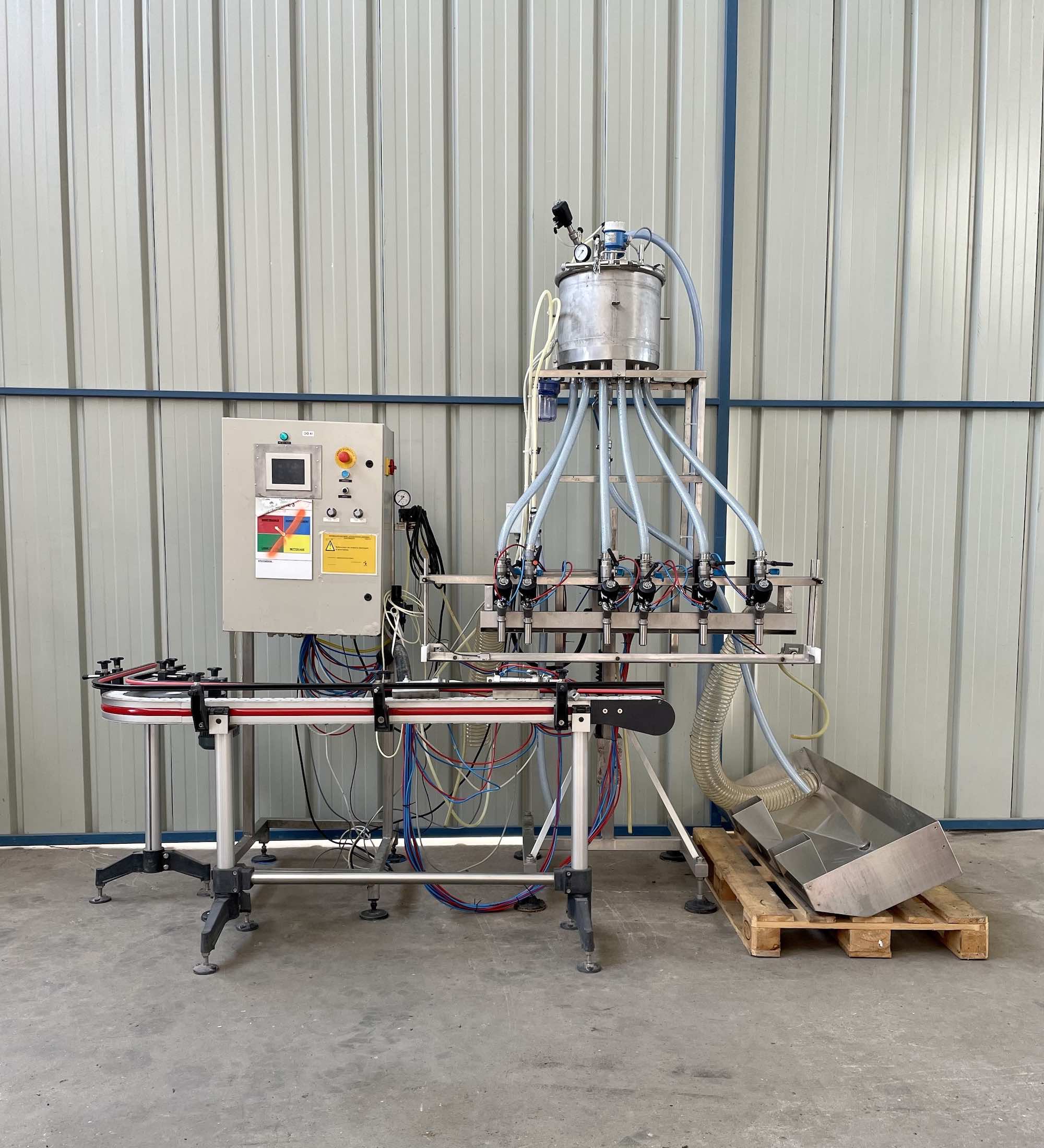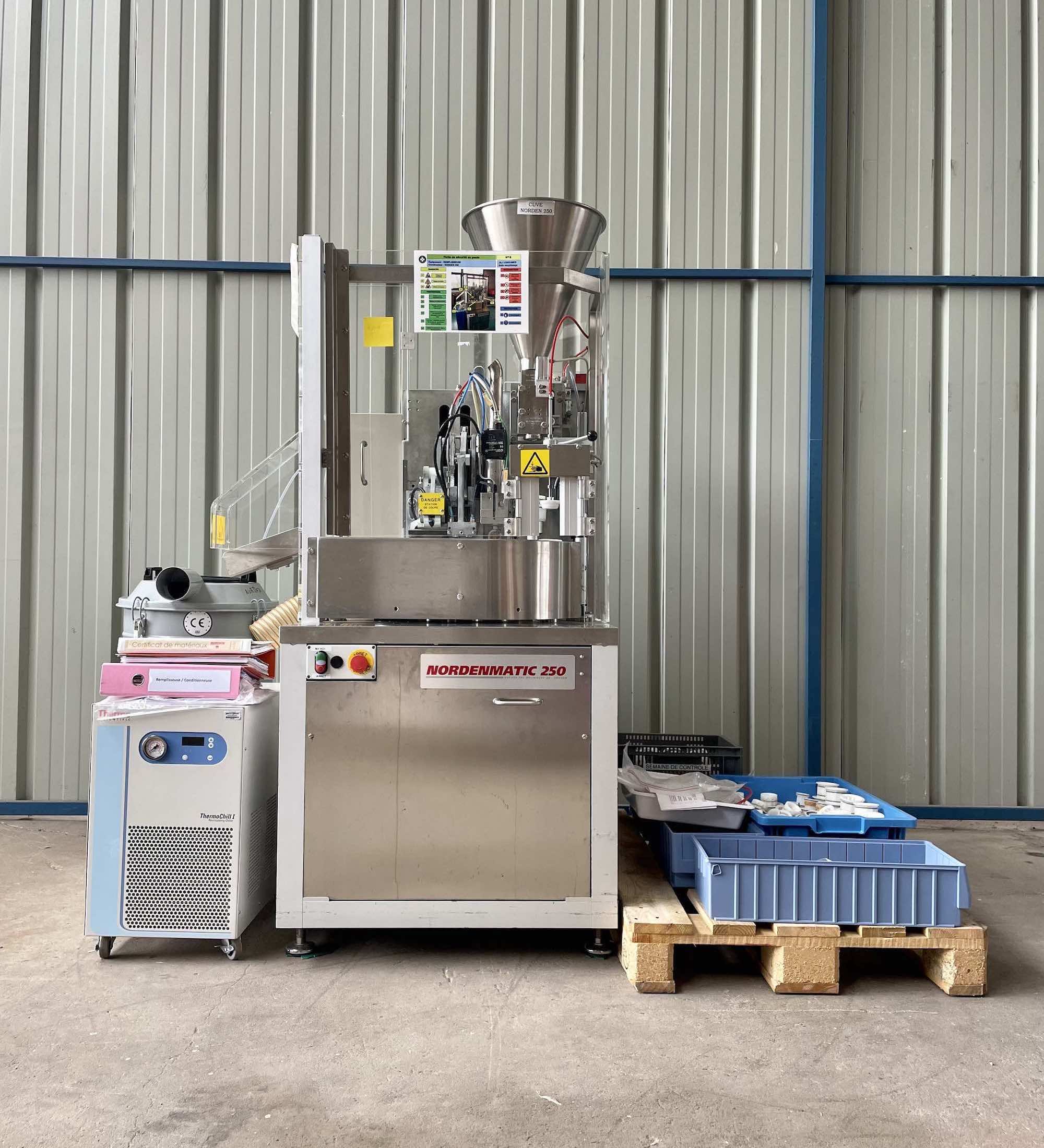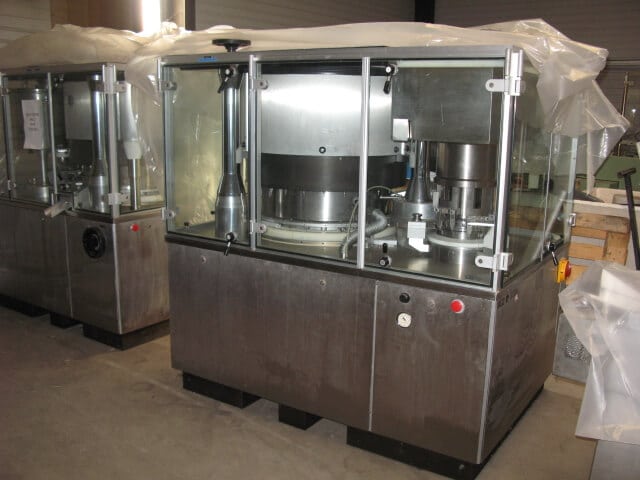What filler should you select for your company?
As an integral part of packaging lines, filling machines are used to fill liquid, pasty, viscous, powder or granular products in primary packaging. The packaging can be made of different substances (PET, cardboard, glass, …) and volumes.
Equipped with a dosing system, the filling machines are able to fill food, chemical, cosmetic or pharmaceutical products.
This equipment is generally associated with forming, sealing and secondary packaging machines (cartoners, shrink-wrappers, etc.). A wide range of semi-automatic or automatic filling machines can be identified.
Buying a second-hand carton filler remains a high investment for some companies. Prices vary depending on the condition, brand, location and year of manufacture of the machine. Osertech offers a wide range of equipment and machinery available, helping buyers to find the best used filling devices.
Linear filler
A linear filler is a packaging machine designed for the automatic or semi-automatic filling of different types of products.
Type of products
Thanks to a volumetric or weight dosing device, providing dosing accuracy, the machine performs linear filling of :
– Viscous products
– Liquid products
– Cosmetic products
– Chemical products
– Pharmaceutical products (syrup, …)
– Food products (fruit juice, milk, yoghurt, honey, compote …)
Operation
The packages are placed upstream on a conveyor system. The substance to fill is stored in a tank attached to the machine. This can be fed by a peristaltic pump, for example.
The conveyor brings the empty containers to the filling station. They are transported and placed linearly under the various filling heads of the machine. As soon as the product packaging is correctly positioned, the conveyor system stops and the filling process begins.
Dosing is performed according to the weight or volume of the product. These technical specifications are entered directly on the dashboard of the dosing and filling machine.
Unlike a rotary filler, which performs the work continuously, the linear filler operates sequentially and in a fragmented way. An automatic linear filler or semi-automatic filler is usually associated with a sealing machine or unit. Depending on the packaging, this may be a capper, screwer, capper or lidding machine.
Types of packaging
Examples of possible packaging :
– Cans
– Vials, ampoules, flasks
– Tubes
– Cup, jars
– Bottles
– Cans, buckets
Rotary filler
A rotary filler is a packaging machine designed for the automatic or semi-automatic filling of different types of products.
Types of use
Thanks to a volumetric or weight filling system, which provides dosing accuracy, the machine performs rotary filling of :
– Viscous products
– Liquid products
– Cosmetic products
– Chemical products
– Pharmaceutical products (syrup, etc.)
– Food products (fruit juice, milk, yoghurt, …)
Types of packaging
Examples of possible packaging :
– Cans
– Vials, ampoules, flasks
– Tubes
– Cup, jars
– PET / glass bottles
– Cans, buckets
How it works
The process is simple. Packages are placed upstream on a conveyor system. The conveyor brings the empty containers to the filling station. They are placed on a rotating wheel. The packaging can be deposited loosely, held by pressure or grasped from the top.
The rotation of the wheel allows two filling methods. The containers can be presented one by one in front of each filling station and filling head. The process will be as follows: filling, sealing, labelling, evacuation.
It can also allow continuous filling of the packaging if the spouts are attached to it. Filling will be carried out during the complete rotation of the wheel. The container will then be evacuated by a conveyor system to the other stations of the production line.
Dosing is carried out according to the weight or volume of the product to be filled. These technical specifications are entered directly on the dashboard of the dosing and filling machine.
Unlike a linear filler, which performs the work in a fragmented manner, the rotary filler operates sequentially or continuously. This gives it a better output. In addition, these machines offer simple and fast format switching.
An automatic rotary filler or semi-automatic filler is usually associated with a sealing machine or module. Depending on the packaging, this can be a capper, screwer, capper or even a sealing machine.
Filling and Capping monoblock
The filling and capping monobloc is a versatile and more compact unit than a line for filling and capping liquid and creamy products.
Frequent formats: glass or plastic bottles and flasks.
The monobloc filling and capping unit is composed as follows: bottle infeed conveyor with minimum load control and adjustable guides, reciprocating starwheel for the transport of the bottles under the filling and capping station, filling station with several dosing heads, capping station (with automatic cap feeding) and bottle outfeed conveyor with maximum load.
These machines are often equipped with a ” cap presence ” control system. If a cap is missing or has a defect, the bottle will be rejected.
On this type of machine, the filling is done fractionally in order to obtain a more precise dosage, this means that the filling will be fractionated in X equal dosages and not in only one.











